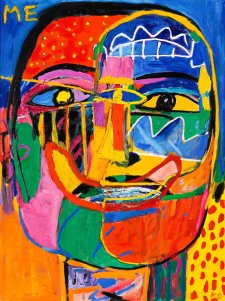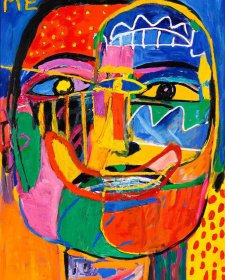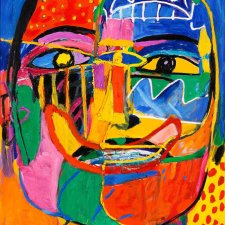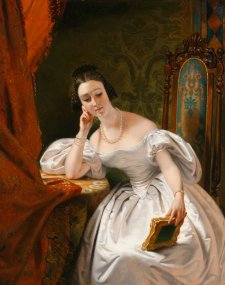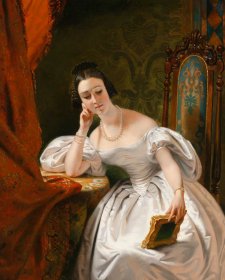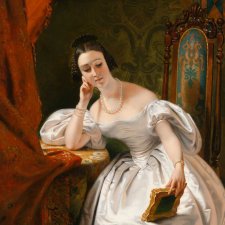When this photograph appeared in 2003 in the September issue of Vogue magazine, it was part of a twenty-page spread fêting Nicole Kidman as a fashion and cinema icon.
Kidman had been applauded for her role as the writer Virginia Woolf in the film The Hours (2002), though critic Paul Schinkel in Time magazine noted that ‘one finds oneself focusing excessively on the unfortunate prosthetic nose Kidman affects in order to look more like the novelist’. Kidman, however, ‘loved it’. ‘The paparazzi would be outside my trailer and I’d use a different name when I walked out and they’d have no idea it was me.’
There is no mistaking the delicate nose and exquisite features in this portrait: it is clearly Nicole Kidman. This sensitive image recalls ‘classic’ early Kidman, as she first appeared in films like Dead Calm (1989) or Days of Thunder (1990), before she had taken on the regal carriage of Hollywood’s highest paid actress and wife to Tom Cruise. Not only is this photograph clearly recognisable as the Nicole Kidman we love, but it is also recognisable as ‘an Irving Penn’.
Born in Plainfield, New Jersey in 1917, Irving Penn is known for his portrait and fashion photography. He trained at the Philadelphia Museum School of Art to be an art director in advertising, while working at Harper’s Bazaar. Penn tried his hand at a number of jobs including a year painting in Mexico but his big break came when Alexander Liberman, art director of Vogue, hired Penn as his assistant, specifically to suggest photographic covers for the magazine. His first cover, published in 1943 launched his career as a photographer. Penn’s work for Vogue redefined the look of photography giving it the clean-edged aesthetic of modernism. By placing his models against a plain backdrop, Penn isolates the subject, removing all indicators of time, place or scale. The contrast against the clean ground monumentalised the subject, excising any peripheral associations that might distract from the portrait. Penn creates masterful compositions based on the strength of the silhouette and a dramatic use of black. The simplicity and formal graphic strength of his composition is often contrasted with a complicated, almost baroque, mesh of angles and curves within a minimal framework. A wealth of details emphasise the tactile physical life of the subject.
Penn’s portrait of Kidman epitomises this approach: the uncluttered background and tight framing gives great emphasis to Kidman’s highly expressive face and hands. In films and photographs of this time, Kidman’s pale skin appears as pure and hard as porcelain. Here Penn captures the surface flaws and textures, indeed there is pathos in the lines and wear on her hands. Penn’s portrait notes a complex moment in Kidman’s personal life and her career. Divorced from Cruise in 2001 Kidman may have welcomed the refuge from the paparazzi offered by the disguise worn in The Hours. The Academy recognised her, however, for her performance and she become the first Australian to win Best Actress. Before presenting the award, Denzel Washington, noted that she won ‘by a nose’.




